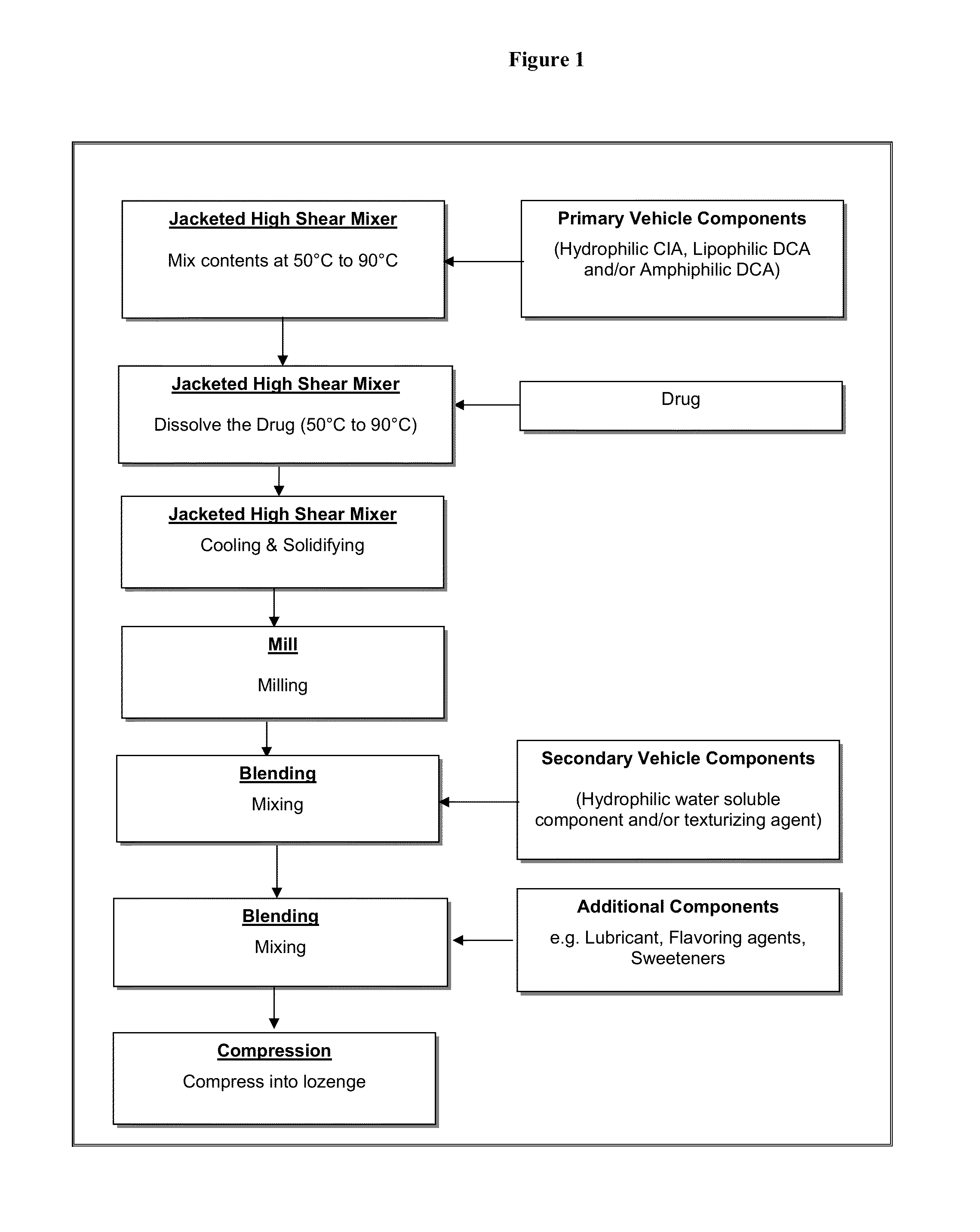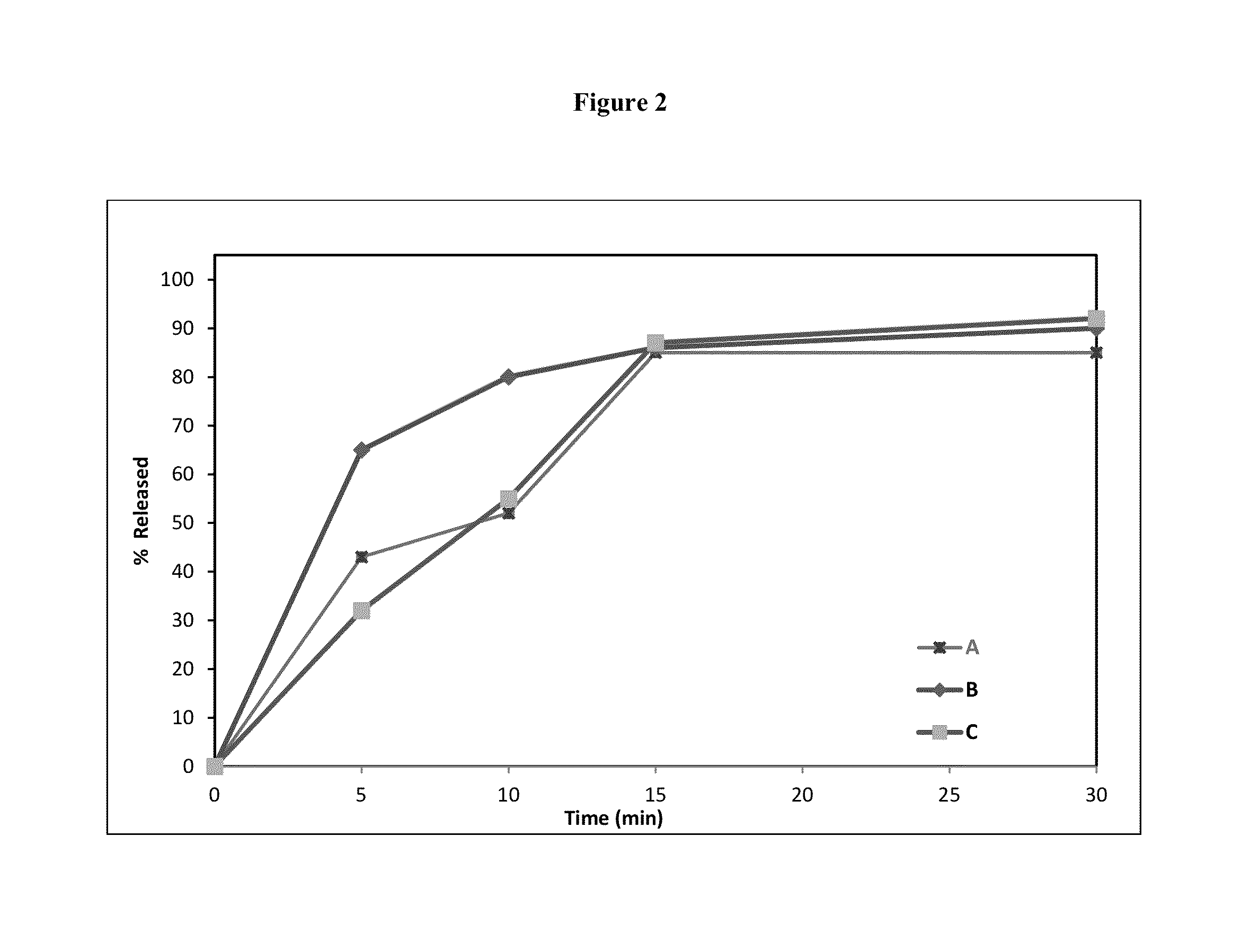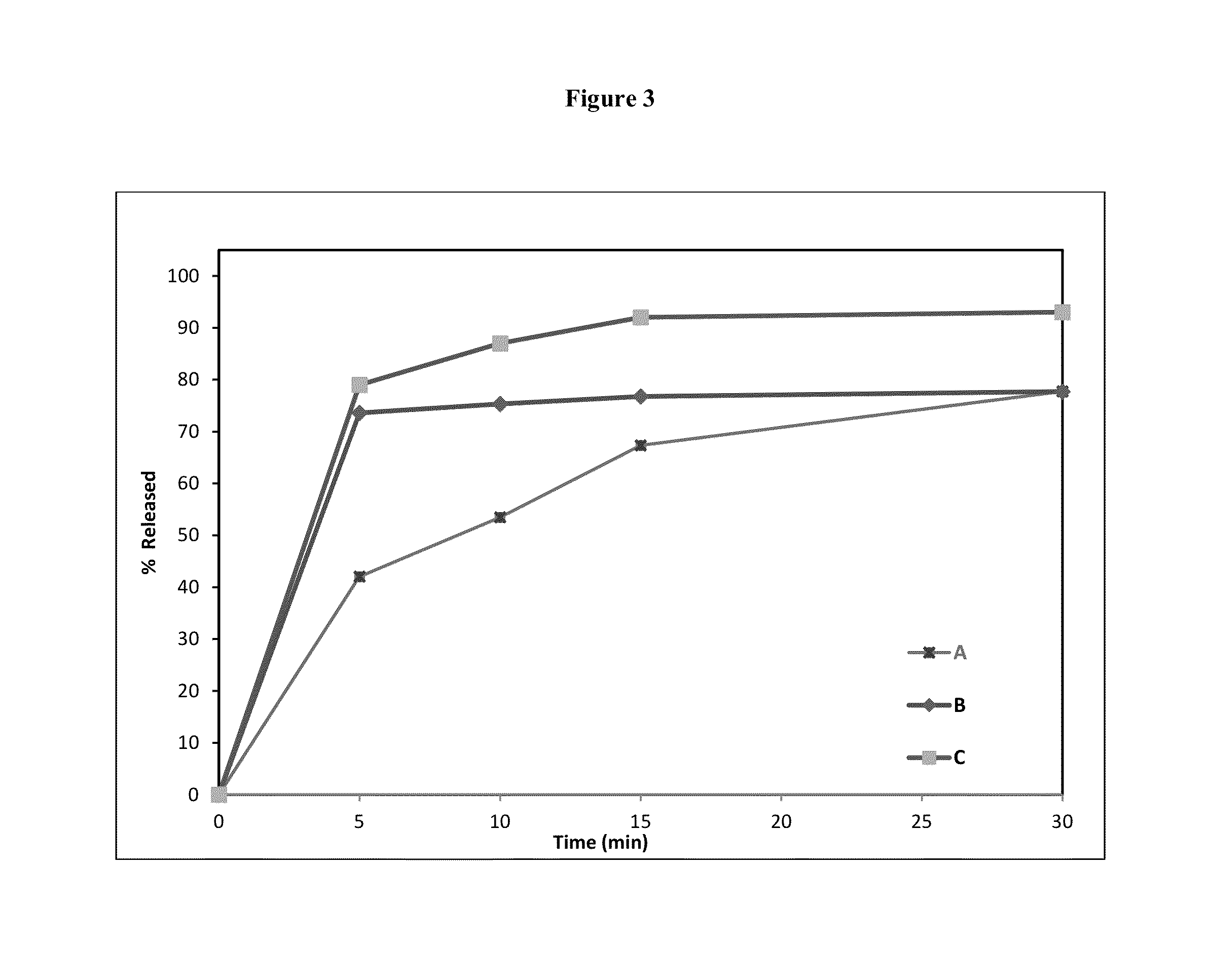Oral transmucosal drug delivery system
a drug delivery system and oral cavity technology, applied in the field of oral cavity drug delivery system, can solve the problems of poor bioavailability, high plasma drug metabolite levels, and fluctuations in plasma drug levels, so as to facilitate decrystallization of said drug, improve patient compliance, facilitate the effect of administration
- Summary
- Abstract
- Description
- Claims
- Application Information
AI Technical Summary
Benefits of technology
Problems solved by technology
Method used
Image
Examples
example 1
[0263]An oral transmucosal dosage form comprising 7 mg of testosterone having the following composition as shown in Table 1 was prepared according to the process described in Table 1 and depicted in FIG. 1.
[0264]
TABLE 1Item #Ingredientsmg per dosePrimary Vehicle with a SynergisticTernary CIA system1Testosterone, USP72Polyethylene Glycol 8000803Hydrogenated Vegetable Oil204Lauroyl polyoxyl-32 glycerides100Secondary Vehicle5Sucrose8056Sorbitol8057Xanthan Gum180Lubricant8Magnesium Stearate, NF3Total2000
[0265]In a jacketed high shear mixer, polyethylene glycol 8000, hydrogenated vegetable oil and lauroyl polyoxyl-32 glycerides were heated to about 80° C. and mixed to obtain a monophasic molten mass. The testosterone was added to the molten mass and allowed to dissolve. The molten mass was then cooled and solidified. The solidified mixture was milled through a Fitzmill. The milled granules of the primary vehicle were blended with the secondary vehicle of sucrose, sorbitol and xanthan gum...
example 2
[0268]An oral transmucosal dosage form comprising 7 mg of testosterone having the following composition as shown in Table 3 was prepared according to the process described in Table 3.
[0269]
TABLE 3Item #Ingredientsmg per dosePrimary Vehicle with one CIA1Testosterone, USP72Polyethylene Glycol 800080Secondary Vehicle3Sucrose8604Sorbitol8605Xanthan Gum190LUBRICANT6Magnesium Stearate, NF3Total2000
[0270]In a jacketed high shear mixer, polyethylene glycol 8000 was heated to about 80° C. to obtain a molten form. The testosterone was added to the molten mass and allowed to dissolve with mixing. The melt dispersion was then cooled and solidified. The solidified mixture was milled through a Fitzmill. The milled granules of the primary vehicle were blended with the secondary vehicle of sucrose, sorbitol and xanthan gum, and then lubricated with magnesium stearate using a V-Blender. The final blend was compressed into a lozenge using 0.68″ round flat tooling with a target weight of 2 g.
[0271]The...
example 3
[0273]A conventional dosage form comprising 7 mg of testosterone having the following composition was prepared according to the process described in FIG. 4. This composition as described in Table 3, lacks a CIA, was prepared for drug release comparison with embodiments of the oral transmucosal dosage forms of the invention, which contain one or more CIAs.
[0274]
TABLE 5S. NoIngredientsmg per DoseBLENDING1Testosterone, USP72Sucrose8953Sorbitol8954Xanthan Gum200LUBRICANT5Magnesium Stearate, NF3Total2000
[0275]In a V-blender, testosterone was blended with sucrose, sorbitol and xanthan gum, and then lubricated with magnesium stearate. The final blend was compressed into a lozenge using 0.68″ round flat tooling with a target weight of 2 g.
[0276]The dissolution data of this oral transmucosal dosage form containing 7 mg of testosterone was tested using the Glass Bead Rotating Bottle Method, as described above. The results of this analysis are as follows in Table 6. The release profiles are sh...
PUM
| Property | Measurement | Unit |
|---|---|---|
| degree of crystallinity | aaaaa | aaaaa |
| melting point | aaaaa | aaaaa |
| Tg | aaaaa | aaaaa |
Abstract
Description
Claims
Application Information
 Login to View More
Login to View More - R&D
- Intellectual Property
- Life Sciences
- Materials
- Tech Scout
- Unparalleled Data Quality
- Higher Quality Content
- 60% Fewer Hallucinations
Browse by: Latest US Patents, China's latest patents, Technical Efficacy Thesaurus, Application Domain, Technology Topic, Popular Technical Reports.
© 2025 PatSnap. All rights reserved.Legal|Privacy policy|Modern Slavery Act Transparency Statement|Sitemap|About US| Contact US: help@patsnap.com



